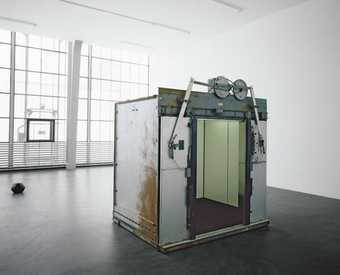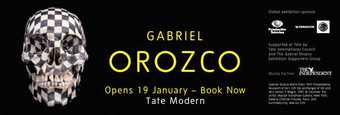Back in 1993 I was walking through the Beaubourg area of Paris when I stepped into a gallery on the rue Quincampoix. Inside, there was only one car. A strange car, so tight that it could fit only the driver and maybe one passenger in the single back seat. This one machine in the middle of the empty room had a singularly perturbing effect: it looked like a shy person nervously retracting when a stranger enters his personal space.
A few days ago, also in Paris, curiously enough, and a few metres from my original encounter, I saw the same compact little Citroën. This time it was not alone. Not far away there was a lift with the doors open and a light on inside. This, like the car, was obviously outside of its natural habitat, simply standing on the floor like an empty cage, impudently showing off its exterior – the side that nobody sees and nobody wants to see when going up or down on the inside. I stepped into the lift. You might be thinking that it would be commonplace to say that I felt claustrophobic, but I did, despite the doors being open and the fact that I’m not normally claustrophobic. I’m also not particularly tall, but the ceiling was only a few centimetres from my head. It was definitely lower than that of a regular lift. I stepped out and confirmed that everything about it was indeed shortened, as though it had fallen from a great height on to this very spot and was compressed upon impact. (I thought of the Pink Panther falling while in a lift, and jumping out of it in the instant before it crashed into the ground. The Panther walks away calmly, while the lift is reduced to a heap of twisted iron.)
Seeing both of those objects gave me the strange feeling of understanding something, followed immediately by a complete lack of understanding at a deeper level. It was clear that both the car and the lift had magically adjusted themselves to Gabriel Orozco’s body size. While I was inside the lift, Orozco was walking around the exhibition, and I was able to verify that his height was not much different from my own. But if that were so, why did the objects not completely adjust to his body? There was room in the lift for him and three or four other people of his height; the car was for him and a single passenger.
Either to clear up the question or make it even murkier, the yellow motorcycles popped into my head, a series of photos that Gabriel took in Berlin in 1995. His yellow Schwalbe could be seen in every picture, parked next to another Schwalbe of the same colour. The scenes changed, and the motorcycles with them; the only thing that remained immutable from one picture to the next was Gabriel’s bike, which brought him across the city to document his successive symmetries. Every collection brings out frustration: the finding of one piece does no more than reveal a new void, and Gabriel’s motorcycle collection was no exception to that rule. Of course he didn’t find what he was looking for in Berlin.
I don’t have an answer to the question that I asked myself above, and I imagine that Gabriel wouldn’t have it either. The yellow motorcycles opened the gap between the other two objects, but the unknown element remained the same: who was driving the clone motorcycle, who were the invisible people who accompanied him in the stationary lift and, most importantly, who was the mysterious person who sat behind the driver of the Citroën?


